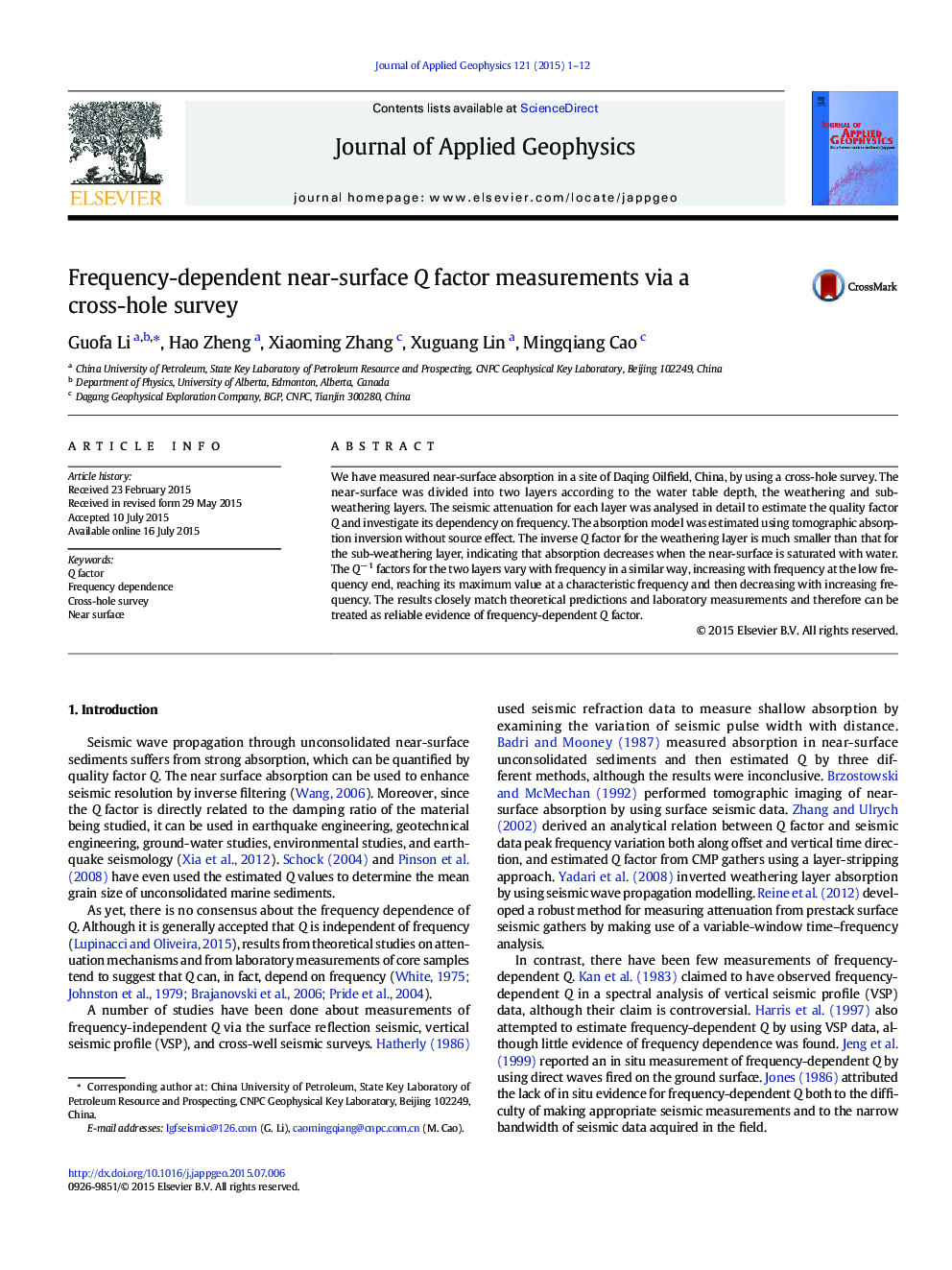| Article ID | Journal | Published Year | Pages | File Type |
|---|---|---|---|---|
| 4739877 | Journal of Applied Geophysics | 2015 | 12 Pages |
•Near-surface absorption was measured by using a cross-hole survey.•A tomographic absorption inversion without source effect is proposed.•Frequency-dependent Q factors are reliably estimated.•The behaviour of the estimated Q factor is in accordance with theory prediction and laboratory measurement.•In situ evidence for frequency-dependent Q is presented.
We have measured near-surface absorption in a site of Daqing Oilfield, China, by using a cross-hole survey. The near-surface was divided into two layers according to the water table depth, the weathering and sub-weathering layers. The seismic attenuation for each layer was analysed in detail to estimate the quality factor Q and investigate its dependency on frequency. The absorption model was estimated using tomographic absorption inversion without source effect. The inverse Q factor for the weathering layer is much smaller than that for the sub-weathering layer, indicating that absorption decreases when the near-surface is saturated with water. The Q− 1 factors for the two layers vary with frequency in a similar way, increasing with frequency at the low frequency end, reaching its maximum value at a characteristic frequency and then decreasing with increasing frequency. The results closely match theoretical predictions and laboratory measurements and therefore can be treated as reliable evidence of frequency-dependent Q factor.
